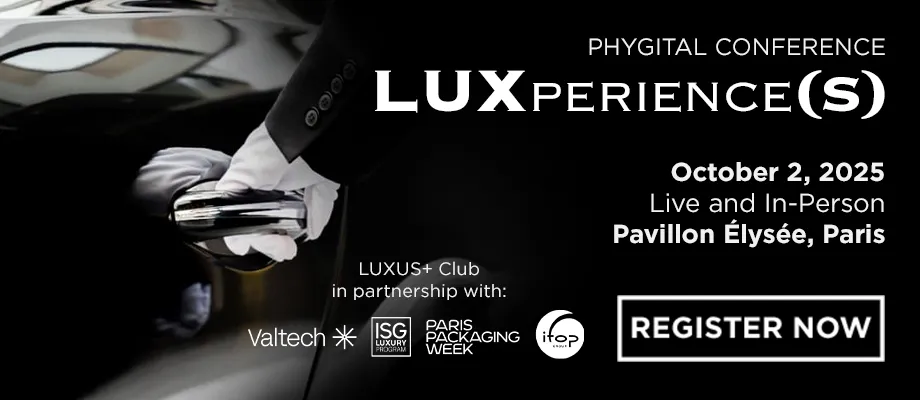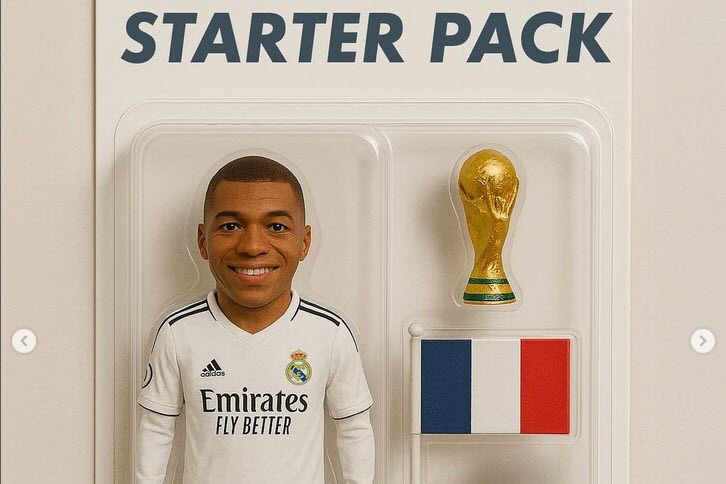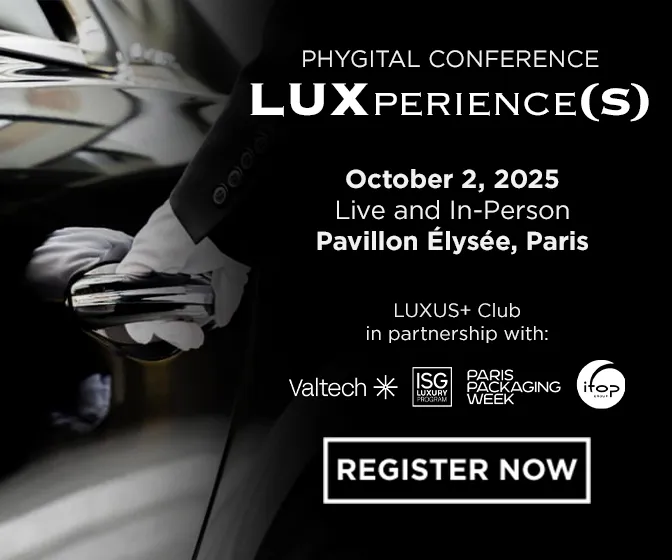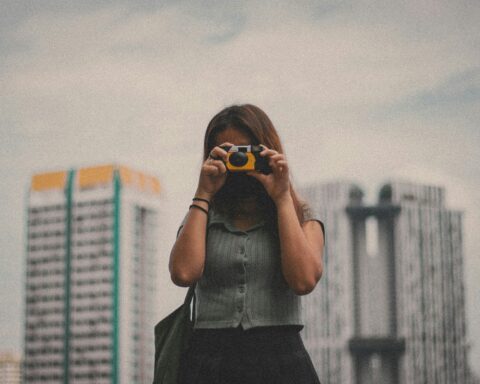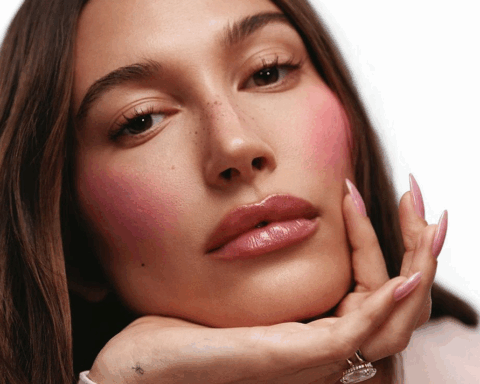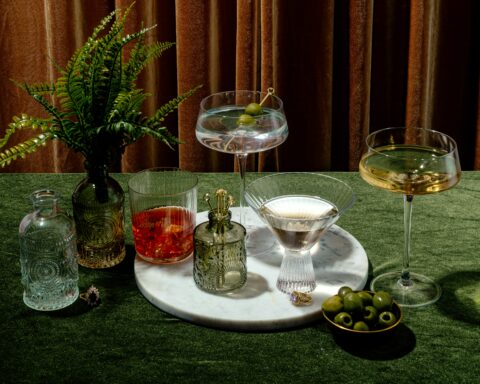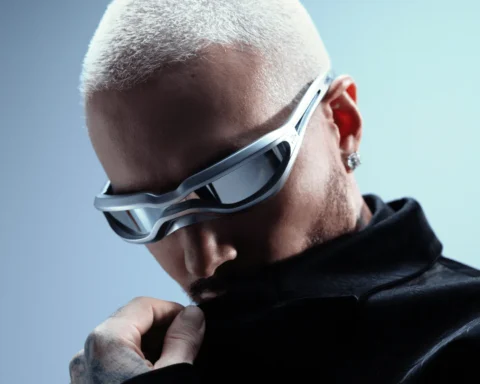In recent days, a new trend on social networks has been stirring the web. Known as “starter packs”, these personalized, AI-generated, collectible figurine-style images have come in for fierce criticism from the art world, putting the place of artistic intelligence in art back at the heart of the debate.
A new scandal against a backdrop of technological progress. Over the past few days, many Internet users have been posting their “starter pack” on the networks. The image is intended to represent the person in the form of a blister-packed figurine, accompanied by his or her favourite lifestyle objects. Camera, pet, book, clothes, favorite drink, sport, flowers… All these elements are supposed to represent the user’s life, just like the little dolls sold in stores to amuse children.
On X, TV host Stéphane Bern succumbed to the trend with a “starter pack” promoting his program Secrets d’Histoire. Gard prefect Jérôme Bonet illustrated his image with a pen and a tricolor flag. On Canal+ Sport’s Tiktok account, you can see the starter packs of footballers Kylian MBappé, Ousmane Dembele and Harry Kane, alongside balls, medals, the Golden Ball Cup, watches, a cat and flags. Sportsmen and women, TV stars, actors, politicians… So many public figures and official accounts who have neither drawn these images nor called on artists, but who have generated these visuals from a simple query on an artificial intelligence platform like ChatGPT.
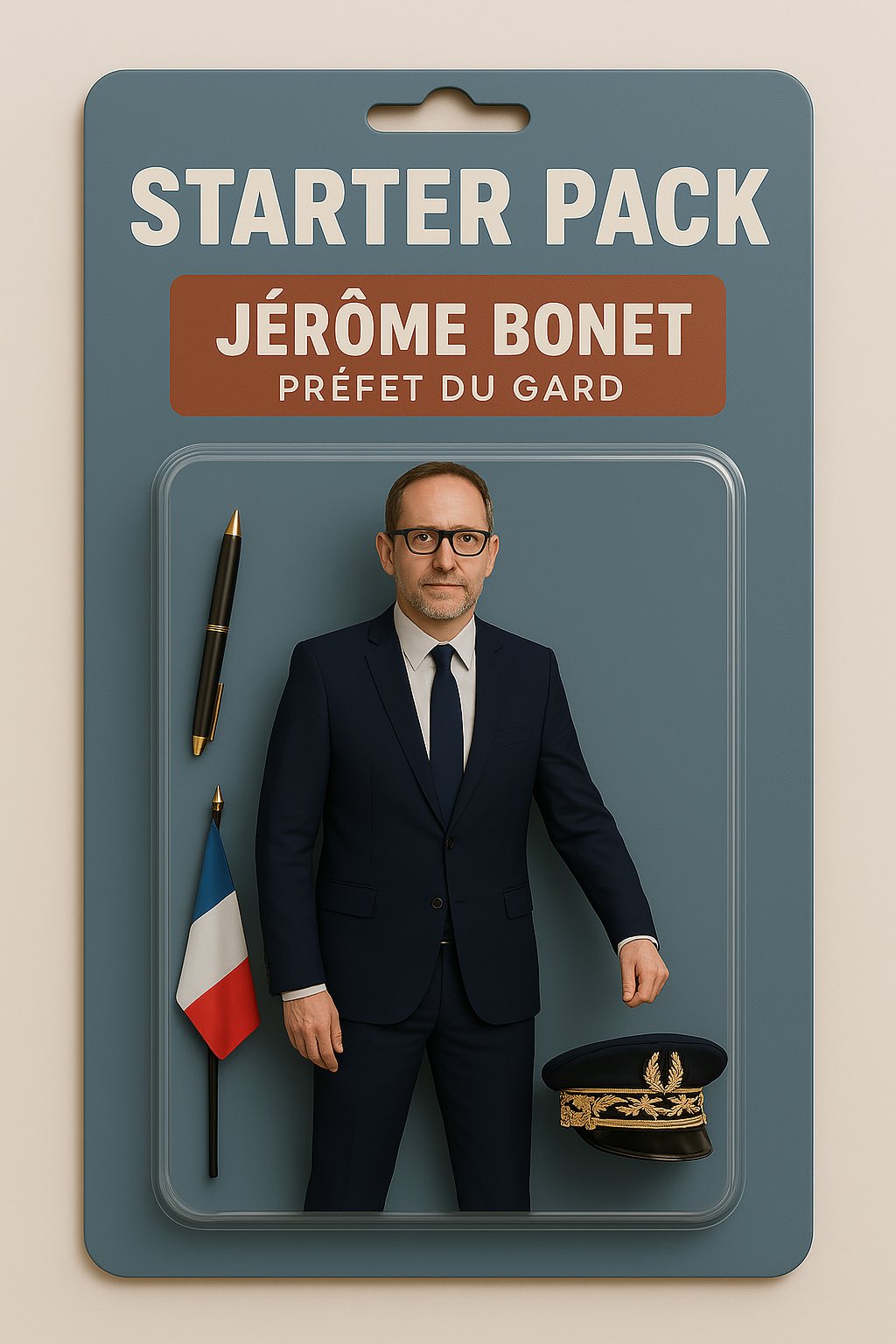
Artificial intelligence: too much for artists
As the trend flooded social networks, the artistic sphere was quick to rise up against “starter packs”. Under the hashtag #starterpacknoAI, artists and illustrators denounce the increasingly predominant role of artificial intelligence in creation. Critics range from the massive standardization of art, to the replacement of real artists by this digital tool, to the ecological impact.
Nouveau Secrets d’Histoire ce soir sur vos écrans, à 21.05 sur France 3. Nous, on a déjà notre “starter pack” @bernstephane et #Secretsdhistoire, et vous ?#starterpack pic.twitter.com/bCL1IhuJjU
— Secrets d’Histoire (@secretshistoire) April 9, 2025
On Instagram, illustrator Patouret created his “starter pack” with his own hands, using the hashtag #starterpacknoAI: “I’m sick of seeing this AI trend EVERYWHERE, so I’m going to take part in it myself, by the sweat of my brow”. The artist has been strongly supported and followed by the creative community, like Mikankey, who exclaimed next to his image, “Now would be a good time to stop this bullshit?”. “Starter pack drawn with real human hands and the use of a real brain. My own. It took me almost two hours. But it’s unique,” says Mespresquesrien.
Blanche Sabbah (Lanuitremueparis) and Julia Fäye have also created their own versions of the starter pack, with the same convictions. Under the hashtag #starterpacknoAI, hundreds and hundreds of images have been created by illustrators both well-known and unknown. A stance that reverses the trend and invites the public to become aware of their work and question the place of artificial intelligence in art.
Voir cette publication sur Instagram
Another challenge: the environment. Environmental activist Gaetan Gabriele, for example, has published a post highlighting the impact of AI on the planet. According to a recent study by the International Energy Agency, consumption generated by generative AI will double by 2030, accounting for 3% of the world’s electricity, compared with 1.5% today.
“A single image generated wastes up to 3.45 liters of water. In other words, more than 17 glasses of water
– For 1,000 images, the researchers estimate the equivalent cost in terms of CO2 to a 6.5 km journey in a combustion engine car.
– One billion messages are exchanged every day on ChatGPT, equivalent to the electricity consumption of around 27,000 French households
– By 2027, generative AI could use as much electricity as Spain
– AI-related emissions could increase by 60% by 2040
– An interaction with chatGPT, uses 10 to 30 times more electricity than a Google search
– In 2022, data centers linked to AI and crypto-currencies accounted for 2% of the world’s electricity production”
It’s also a very specific visual that has scandalized the web. To promote a libertinaeg site, an Internet user generated a “starter pack” of Gisèle Pelicot, victim of the ultra-mediatized Mazan rape affair and today considered a great feminist and courageous figure. The Frenchwoman can be seen dressed in pyjamas alongside elements that hint at the rapes she suffered: a bed, a drug and a camera. The image, generated by a soulless machine, is scandalous and indecent, and has not failed to outrage the public. For it’s hard to imagine a human artist drawing such a visual, given the controversy and legal repercussions he could face.
The question of copyright
Alongside this criticism, artists have legitimately raised the issue of copyright. Indeed, many starter packs are directly inspired by the style of specific illustrators, or even completely copied from their artistic universe. A theft of the work of creative artists, neither consented to nor paid for these visuals.
This scandal echoes the controversy at the end of March, when ChatGPT generated pictures in the style of Studios Ghibli, thumbing its nose at co-founder Hayao Miyazaki, who is resolutely against AI. It couldn’t have been simpler. All you had to do was upload one of your photos and the AI would transform it into an image copied from the studio’s universe.
And if the law is struggling to keep pace with the ultra-fast development of AIs, the law is still supposed to protect artists and creators from copying, even if its boundaries with inspiration and influence are sometimes fine.
According to Le Monde du Droit: “Firstly, not all data used by generative AIs is protected by copyright. Generative AIs are trained on vast data sets, which include public corpora available on the Internet […]. However, according to a famous legal adage, “ideas have a free course”. In concrete terms, this means that copyright is there to protect works of the mind that demonstrate originality (i.e. that reflect the personality of their author), but that a contrario, copyright cannot be used to protect simple facts, raw information, ideas or concepts expressed or related on the Internet”.
Artists’ advocacy organizations are thus calling for clarification and regulation of laws to better protect creative artists – and more quickly – around three pillars in particular for the AGAGP entity: remuneration, transparency (concerning AI inspirations) and consent.
If the law can be slow when it comes to making texts evolve rapidly, and it is still difficult to sanction AIs and their users, raising public awareness is a crucial issue in order, as in the case of the “starter pack”, to educate people about the abuses of this tool and promote the work of artists.
Read also : AI at Christie’s: auction scandal
Featured photo : © Tiktok Canal

